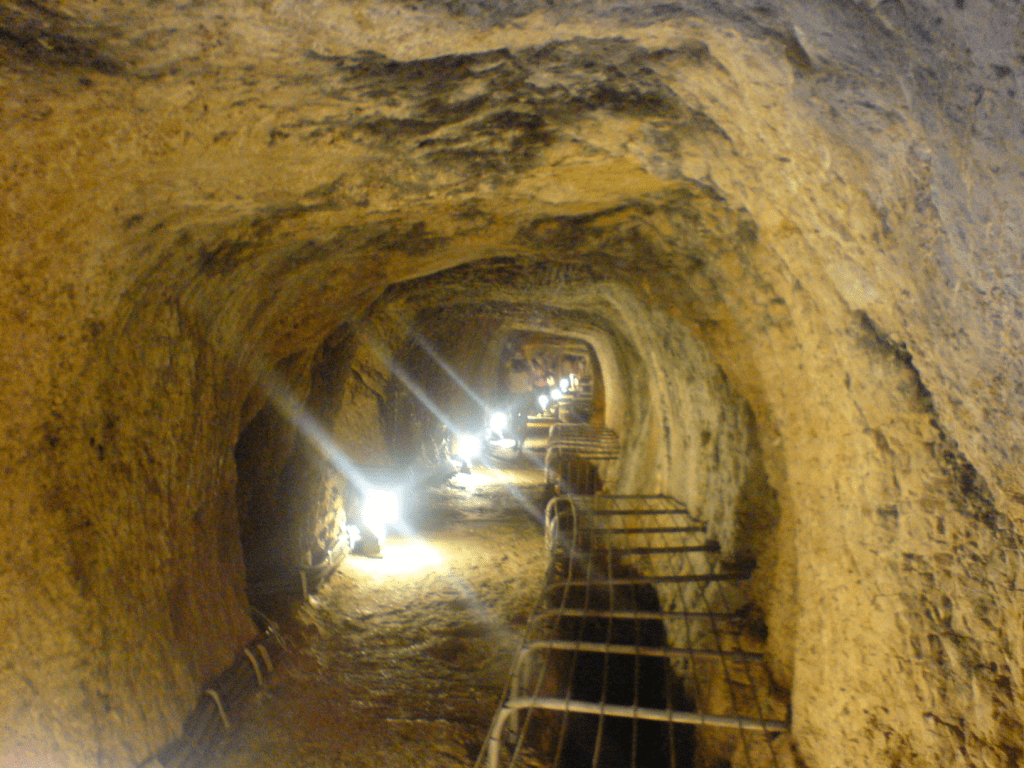A Daring Solution to a Critical Need
In the sixth century BC, on the Greek island of Samos, engineers faced a challenge that required both innovation and bravery. The city, thriving under the rule of the tyrant Polycrates, needed a reliable and protected water source. Their freshwater spring lay on the opposite side of Mount Kastro, making it vulnerable to attack if left exposed. The solution? Build an underground aqueduct straight through the mountain.

This was no ordinary dig. The construction called for workers to tunnel from both ends of the mountain and meet in the middle an ambitious plan even by today’s standards. Astonishingly, when the two teams broke through, they were off by only six feet. For a project executed without modern tools or technology, it remains one of the most impressive engineering feats in human history.
Meet the Visionary: Eupalinos of Megara
The mastermind behind the project was Eupalinos, an engineer from the city of Megara. Tasked with directing the construction, he employed remarkable foresight and planning. His approach was not just practical but daring. Tunneling through a mountain from both ends simultaneously was unprecedented. Yet Eupalinos trusted in his methods, using basic geometry and clever measuring techniques to align the two digging paths.
Video:
The Tunnel of Samos.m4v
Unlike today’s engineers who rely on lasers, GPS, and complex software, Eupalinos and his team had only string, rulers, and mathematics. And still, they achieved near-perfect alignment through roughly 3,400 feet of solid limestone. This level of accuracy an error of only six feet continues to baffle and impress modern engineers and historians.
How the Tunnel Was Built
The tunnel, now known as the Tunnel of Eupalinos, was about six feet high and just wide enough to allow a worker to pass through with tools. It stretched over half a mile, carved entirely by hand with primitive tools like hammers and chisels. Workers toiled in dark, cramped conditions, with only oil lamps to light the way.
One of the tunnel’s most fascinating features is the fact that it begins as a horizontal passage but subtly shifts to a zigzag pattern near the center. Historians believe this may have been a correction made when the two ends began to drift off alignment. Rather than restarting the project, Eupalinos adjusted the trajectory slightly, allowing both tunnels to connect with minimal deviation. This zigzag was not a flaw but an ingenious adjustment under pressure.

The Aqueduct’s Function and Legacy
Once completed, the tunnel housed a clay pipe system that channeled fresh spring water directly into the city of Samos. It provided clean drinking water to thousands of residents and remained in use for centuries.
Video:
5 Incredible Examples of Ancient Engineering
More than just a water supply system, the Tunnel of Eupalinos became a symbol of ancient Greek skill and foresight. Today, it is regarded as one of the earliest known examples of true underground tunneling using advanced geometric principles. Historians and engineers view it as a precursor to modern civil engineering, particularly in the field of hydraulic infrastructure.
Rediscovery and Recognition
For centuries, the tunnel remained hidden and forgotten. It was not until the 19th century that archaeologists, guided by ancient texts, rediscovered the passage. Inscriptions from Herodotus, the famous Greek historian, helped confirm the tunnel’s significance and its attribution to Eupalinos.
Today, the tunnel is open to visitors and stands as a UNESCO World Heritage Site. Tourists can walk through parts of the original passage, getting a firsthand look at the remarkable precision achieved by ancient hands.

Why It Still Matters Today
The Tunnel of Eupalinos is more than a historical artifact. It is a powerful reminder that innovation does not always require advanced machinery or digital tools. With determination, teamwork, and a deep understanding of mathematics and the natural world, even ancient builders could achieve astonishing results.
In a world where we often take technology for granted, the tunnel carved through Mount Kastro stands as a silent testament to human potential. Over two thousand years later, it continues to teach, inspire, and challenge the boundaries of what we believe is possible.


